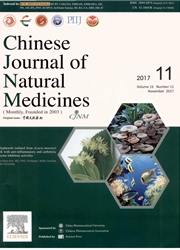

 中文摘要:
中文摘要:
HBV感染动物模型是研究HBV致病机制、筛选新型有效抗HBV药物和治疗方法的重要工具,然而HBV感染具有高度组织特异性以及种属特异性,这给HBV感染动物模型的建立带来了困难。近年来,随着分子生物学、实验动物学、病毒学及免疫学等相关学科技术的进步,HBV感染或复制动物模型取得了明显进展。目前应用于HBV(包括与HBV具有相似特性的动物肝炎病毒)研究的动物模型主要包括黑猩猩、树鼩、土拨鼠及鸭HBV感染模型,HBV转基因小鼠、高压水动力注射介导的小鼠HBV复制模型和重组腺相关病毒载体介导的小鼠HBV复制模型,以及人源化人-鼠嵌合肝脏HBV感染模型,此外,钠离子-牛磺胆酸共转运蛋白转基因小鼠感染模型是近年的研究热点。本文就上述HBV动物模型的研究进展进行综述。
 英文摘要:
英文摘要:
HBV infection animal model is an essential tool for studying pathogenesis of HBV and screening novel and effective anti-HBV drugs or treatment methods. However, HBV infection is highly tissue specific and species-specific, which brings difficulties to the establishment of HBV infection model. In recent years, with advances in technology of related disciplines such as molecular biology, experimental zoology, virology, and immunology, obvious progress has been acquired in HBV infection or replication animal models. Currently-used HBV animal models(including those models for animal hepatitis with similar characteristics of HBV) are mainly comprised of chimpanzee, tree shrew, woodchuck, and duck viral infection model, HBV transgenic mouse, hydrodynamic injection of HBV vector, and adeno-associated virus-mediated mouse HBV replication models, as well as human-murine liver chimeric mouse HBV infection model. In addition, sodium-taurocholate co-transporter transgenic mouse model is a hotspot in recent years. This article provides an overview of advances in above-mentioned HBV animal models.
 同期刊论文项目
同期刊论文项目
 同项目期刊论文
同项目期刊论文
 期刊信息
期刊信息
